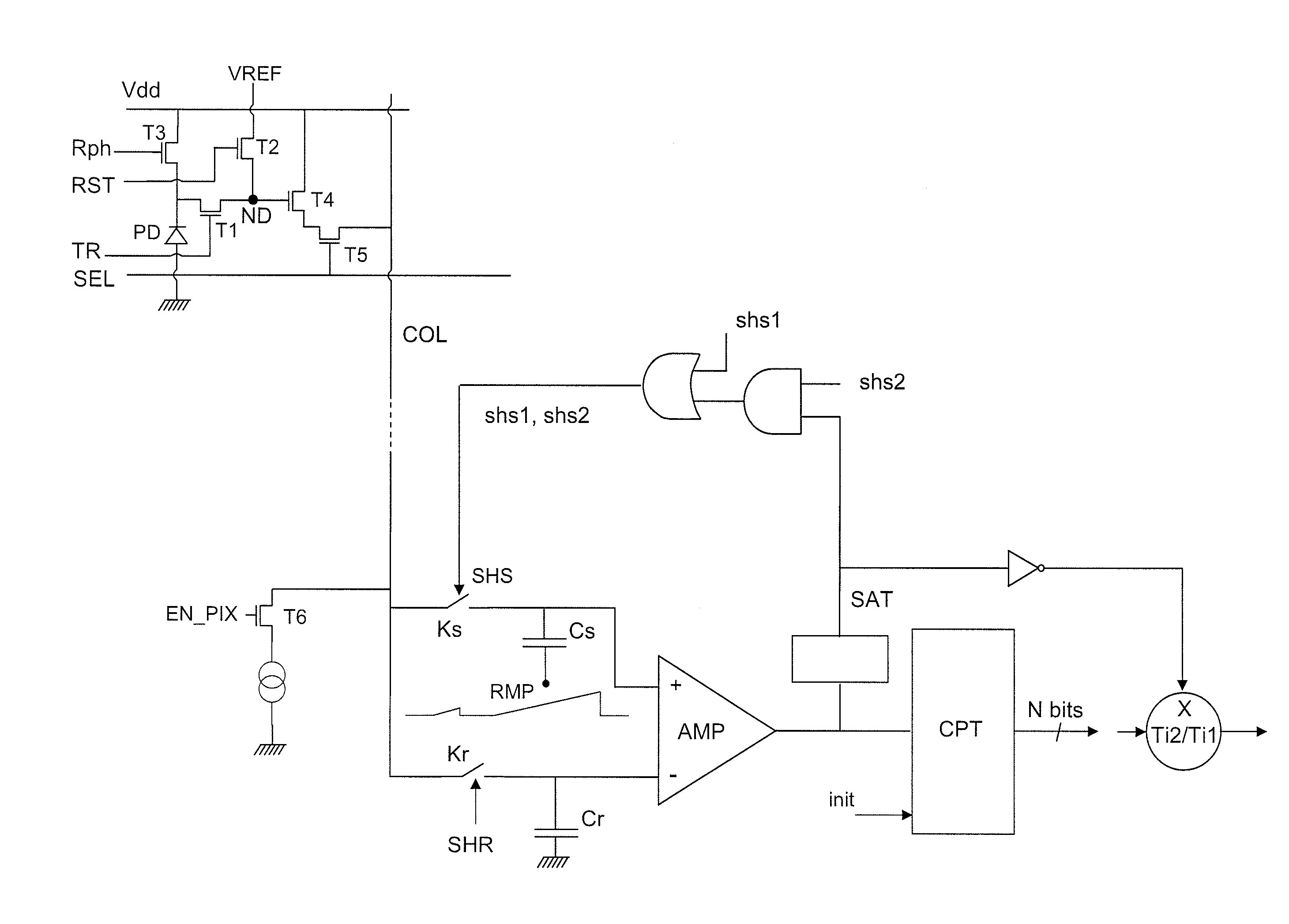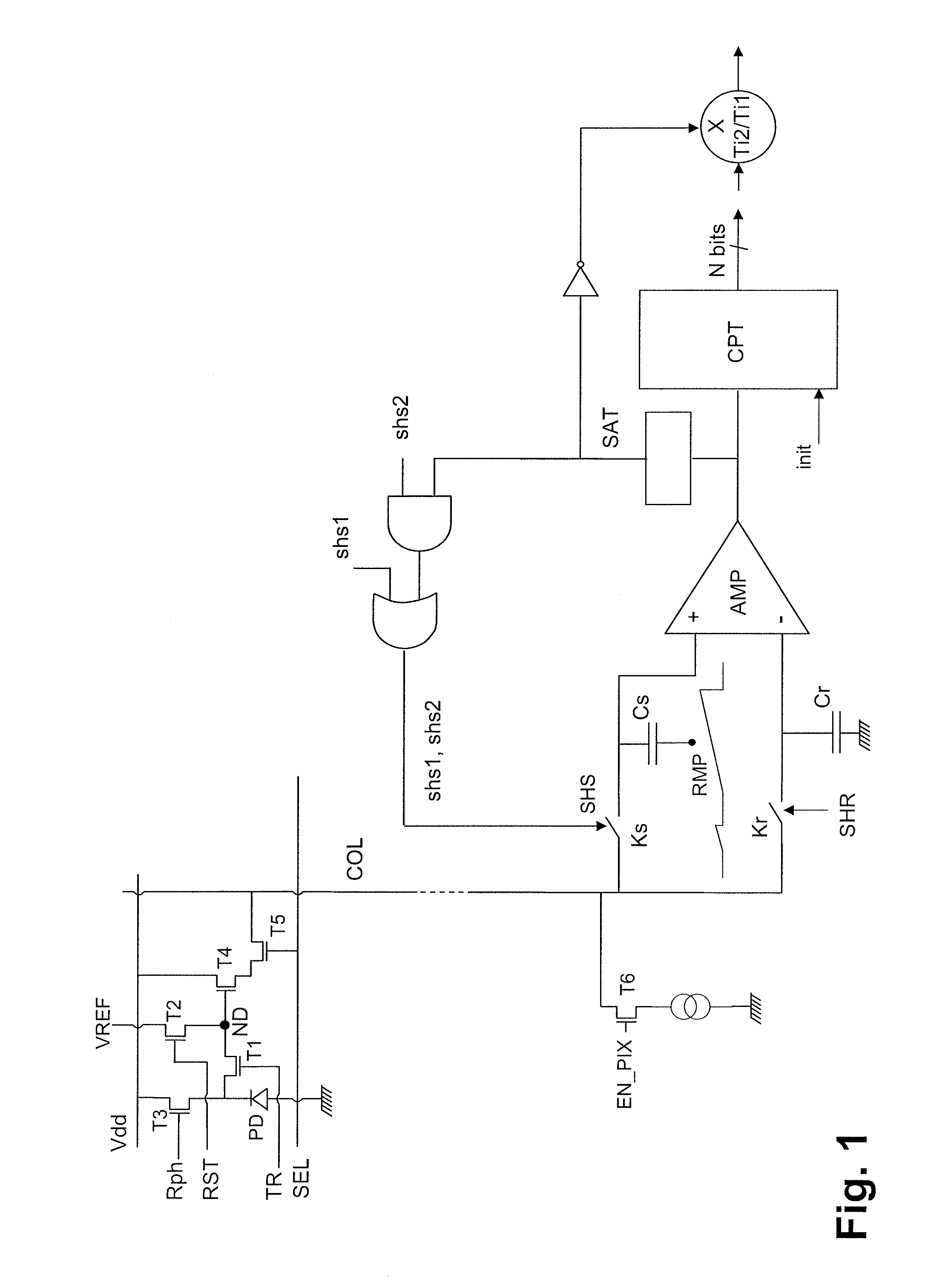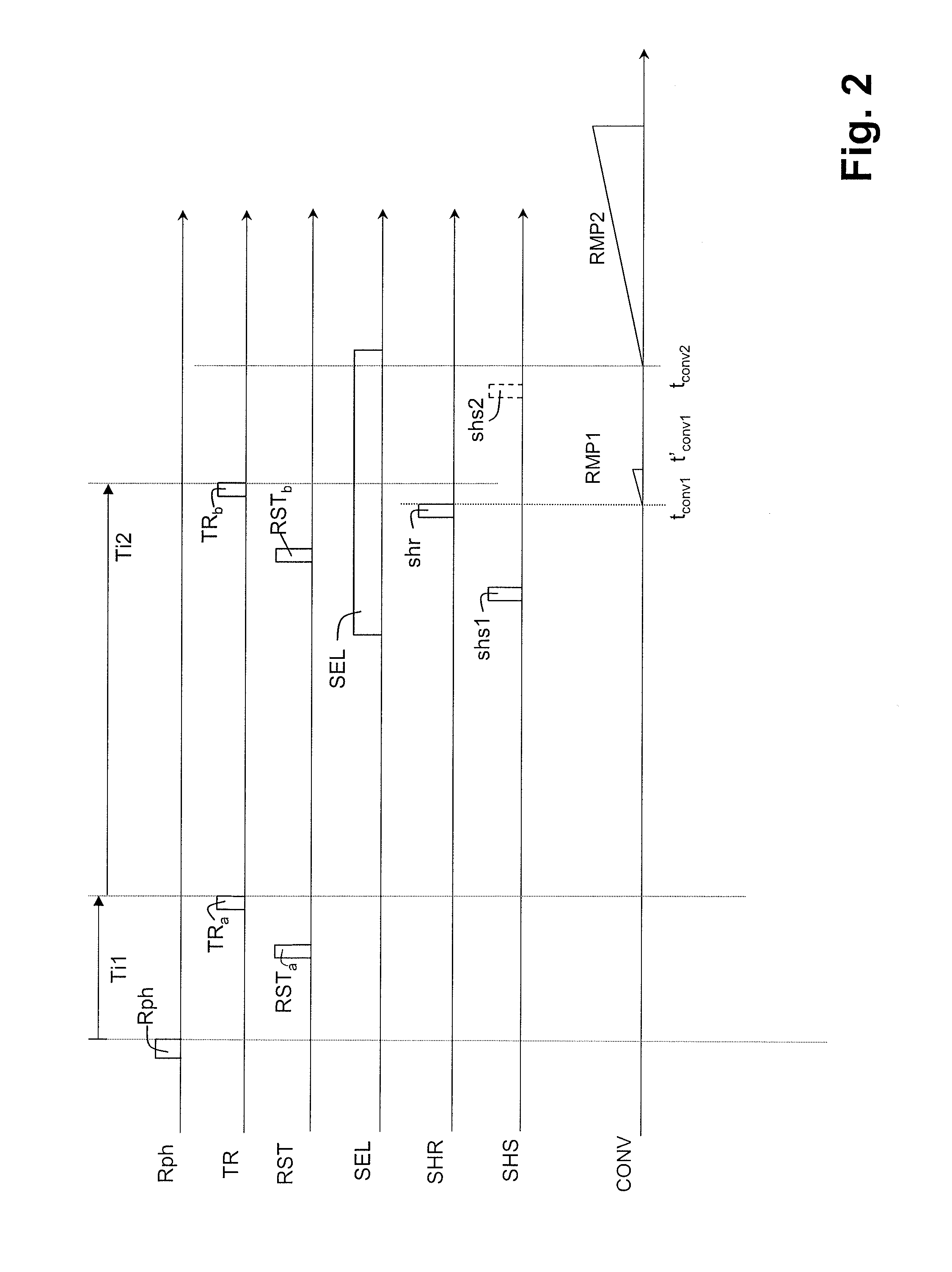Image sensor with double integration time and conditional selection
a technology of image sensor and conditional selection, applied in the field of image sensor, can solve problems such as loss of dynamic range and interval reduction
- Summary
- Abstract
- Description
- Claims
- Application Information
AI Technical Summary
Benefits of technology
Problems solved by technology
Method used
Image
Examples
Embodiment Construction
[0024]An active pixel with five transistors and a reading circuit of a sensor according to the invention are represented in FIG. 1. The structure of the pixel is conventional. It comprises a photodiode PD, a capacitive storage node ND (represented by a simple point in FIG. 1, and embodied in practice by an N-type diffusion in a P-type layer), a transistor for charge transfer T1 between the cathode of the photodiode and the storage node, a transistor T2 for reinitializing the potential of the storage node, a transistor T3 for reinitializing the potential of the photodiode, a follower transistor T4, a row selection transistor T5. For a pixel with four transistors the transistor T3 would be dispensed with.
[0025]The transfer transistor T1 is controlled by a transfer signal TR. The transistor T2 has its drain linked to a reference potential VREF and it is controlled by a reinitialization control signal RST. The transistor T3 is linked between the cathode of the photodiode and a reference...
PUM
 Login to View More
Login to View More Abstract
Description
Claims
Application Information
 Login to View More
Login to View More - R&D
- Intellectual Property
- Life Sciences
- Materials
- Tech Scout
- Unparalleled Data Quality
- Higher Quality Content
- 60% Fewer Hallucinations
Browse by: Latest US Patents, China's latest patents, Technical Efficacy Thesaurus, Application Domain, Technology Topic, Popular Technical Reports.
© 2025 PatSnap. All rights reserved.Legal|Privacy policy|Modern Slavery Act Transparency Statement|Sitemap|About US| Contact US: help@patsnap.com



